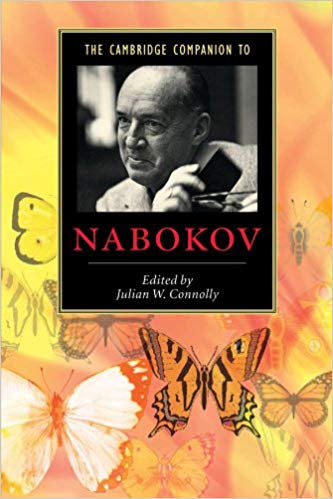tutorial, commentary, study resources web links
Transparent Things (1972) was the penultimate novel Vladimir Nabokov published in his own lifetime. It was superseded only by Look at the Harlequins in 1974 and his posthumous The Original of Laura which was published in 2009. It was his sixteenth novel, and the seventh he had written in English, which was his third language after Russian and French. It is written in a very oblique and mannered style which is typical of works from his late period.

Transparent Things – critical commentary
The intrusive narrator
Nabokov was very keen on using first person narrators. These characters are often witty (Humbert Humbert) sometimes crazy (Charles Kinbote) and on occasions they deliberately set out to bamboozle the reader (Smurov, in The Eye). In Transparent Things the un-named narrator seems intent on making the sequence and the reader’s understanding of events as difficult as possible.
There is no reason to think of the narrator as other than male. Apart from half-formed philosophic observations on time and physical reality, he is presenting the story largely from Hugh Person’s point of view – but it is often difficult to know where one point of view ends and the other begins. The narrator becomes almost like an actor in his own narrative. He addresses his characters; he speaks to the reader; he invents interlocutors; he speaks on behalf of Hugh Person from time to time; and he even talks to himself, commenting on his own story.
This is intended to be playful and amusing, but his presence becomes over-intrusive without ever taking on the persona of a fully realised character. There is also no explanation offered for his relationship to Hugh Person. We are never told how he knows what Hugh is thinking and feeling . Like many of Nabokov’s other stylistic devices used in his later works, this intrusiveness becomes irritating
Nabokov and sexuality
There is now a well-established argument that Nabokov displayed a very questionable interest in sex with under-age girls throughout his career as a writer. Examples range from his earliest stories such as A Nursery Tale (1926), novels such as Laughter in the Dark (1932), his novella The Enchanter (1939), the famous case of Lolita (1955), through to late works such as Ada or Ardor (1969), Look at the Harlequins (1974), and even beyond to his unfinished The Original of Laura which was published in 2009 after his death.
This is a phenomenon that Martin Amis has described as something of an embarrassment in a writer otherwise so distinguished. But what is not so widely remarked is that at the same time as his interest in paedophilia (which he euphemised by substituting the term nympholepsy) his later works take on a distinct and unpleasant aura of smuttiness half hidden under his lexical virtuosity.
For instance the coquettish Armande has a disagreement with her three male friends that she unnecessarily explains to Hugh Person:
Facing him in the heavenly cable car she gave him a comparatively polite version of what she was to tell him a little later in disgustingly vivid detail. Jacques had demanded her presence at the onanistic sessions he held with the Blake twins at their chalet. Once already he had made Jack show her his implement but she had stamped her foot and made them behave themselves. Jacques had now presented her with an ultimatum – either she join them in their nasty games or he would cease being her lover.
Hugh Person speculates on the sexual relationship between the elderly author R and his stepdaughter Julia Moore – and the first possibilities that occur to him involve paedophilia. These are Hugh Person’s thoughts of course, not Nabokov’s, but the frequency with which the subject recurs throughout his work (and this work in particular) makes them attributable to Nabokov. After all, if this is not a topic in which he is interested, why does he keep on writing about it?
He also caught himself trying to establish … at what age, in what circumstances, the writer had begun to debauch Julia: had it been in her childhood – tickling her in her bath, kissing her wet shoulders, then one day carrying her wrapped in a big towel to his lair, as delectably described in the novel? Or did he flirt with her in her first college year
We have already been told (as has Hugh Person) that Julia ‘had been debauched at thirteen by R.’ The same sort of images and voyeuristic details are written into the chapter where Hugh Person visits Armande’s home and is given a collection of family photograph albums to peruse by her mother:
The visitor constructed a pile of albums to screen the flame of his interest . . . and returned several times to the pictures of little Armande in her bath, pressing a proboscidate rubber toy to her shiny stomach or standing up, dimple-bottomed, to be lathered. Another revelation of impuberal softness (its middle line just distinguishable from the less vertical grass-blade next to it) was afforded by a photo of her in which she sat in the buff on the grass, combing her sun-shot hair and spreading wide, in false perspective, the lovely legs of a giantess.
Literary style
Nabokov is famous as a master of prose style. He is normally inventive, articulate, witty, and at his best produces marvellous images and turns of phrase. He can be serious and very funny at the same time; his construction of complex plots and unusual approaches to narrative are matchless; his range of language is dazzling; and yet towards the end of his creative life, these very strengths seem to become his weaknesses. The most obvious case is Ada or Ardor – his parallel to Finnegans Wake – a book stuffed so full of literary tricks and word games, it becomes unreadable.
Transparent Things is littered with annoying and childish alliteration – ‘as the pictured past and the perceived present possess’. Nabokov chooses provocatively silly (and alliterative) names – ‘Paul Plam’ – ‘Jack, Jake, and Jacques’ – ‘Tom Tam’. And worst of all he indulges his penchant for embarrassing schoolboy smut – ‘there’s many a mile between Condom in Gascogne and Pussy in Savoie’.
There are also too many bravura but irrelevant passages, long sequences of word-play in the (short) novel that are out of all proportion in their lack of significance. For instance, three pages are devoted to the manufacture of wooden pencils, and there is an equally lengthy description of a trick tennis shot that Hugh Person thinks he has invented. Neither of these has anything to do with the rest of the novel.
Quite apart from the issues discussed above, the principal weakness of the novel is that there is nothing holding its parts together – no unifying theme or subject. Hugh’s relationship with his father leads nowhere; the sections of the novel that are set in America are geographically unconvincing; the characters of R and his stepdaughter Julia add very little; Hugh’s somnambulism is a rather creaking plot device that allows Nabokov to create a protagonist who murders his wife; and Hugh’s death in the hotel fire is quite accidental, not in any way linked to what has preceded it in the narrative.
Transparent Things – study resources
Transparent Things – Penguin Classics – Amazon UK
Transparent Things – Penguin Classics – Amazon US
The Cambridge Companion to Nabokov Amazon UK
Vladimir Nabokov: The Russian Years – Biography: Vol 1 – Amazon UK
Vladimir Nabokov: American Years – Biography: Vol 2 – Amazon UK
Zembla – the official Nabokov web site
The Paris Review – Interview with Vladimir Nabokov
First editions in English – Bob Nelson’s collection
Vladimir Nabokov at Wikipedia – biographical notes, links
Vladimir Nabokov at Mantex – tutorials, study guides
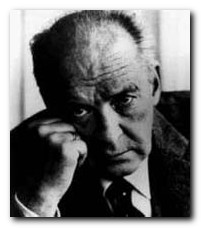
Transparent Things – chapter summaries
1 A narrator reflects on the relationship between the past and future, and on the nature of physical objects.
2 Hugh Person arrives at a Swiss hotel eight years after his previous visit.
3 He finds a pencil in his room. The process of manufacturing wooden pencils is described in detail.
4 He recalls an earlier visit to the hotel with his father, whose clumsiness irritates him.
5 He goes out shopping with his father, who dies in the fitting room whilst trying on some trousers.
6 With his father’s money, he treats himself to an expensive meal, hires a prostitute, then endures a sleepless night alone.
7 As a child then as a youth, he has suffered from somnambulism.
8 After leaving university, he works in publishing. He edits a badly written romance, then takes up work with R, who lives in Switzerland.
9 Travelling through Switzerland on a train, he meets Armande, whom he wishes to impress.
10 He meets the novelist R at the hotel to discuss business, but cannot stop thinking about Armande.
11 Hugh previously attended an avant-garde play in New York with Julia Moore, then had sex with her afterwards.
12 He visits Armande’s home, but she is not there. Her mother shows him photo albums featuring pictures of Armande as a nude young girl.
13 The next day he meets Armande and Julia Moore in a village coffee shop.
14 He meets Armande at a rendezvous, but finds her with three men. They all hike up a mountain, whilst Hugh is forced to turn back.
15 He watches Armande skiing, then unsuccessfully tries to make love to her on the way back home.
16 Hugh’s sleeping problems and his trick tennis shot which he rehearses mentally as a soporific. His horrible erotic dreams, plus flashes forward to his marriage and some sort of crime.
17 Hugh is besotted with Armande, but she is not a very satisfactory wife. She has slightly bizarre sexual preferences, and is unfaithful to him.
18 Hugh travels to Switzerland to persuade R to make changes to his latest book – which he refuses to do.
19 In New York Hugh corrects the proofs to R’s novel, which contains references to the seduction of his young stepdaughter.
20 Hugh is being interviewed by the police, because his wife has been strangled. He has a dream of killing a prostitute, and wakes up to find his wife dead on the floor.
21 R writes to his publisher Phil about his preparations for death following an unsuccessful operation.
22 Hugh buys a pair of walking boots and retraces his journey to Armande’s house.
23 He also retraces the mountain climb he made with Armande and her three men friends, but he fails to reach the cable car.
24 Hugh compiles a list of reflections on death whilst he is in various mental hospitals.
25 Eight years after murdering Armande he is visiting the Swiss hotels they stayed in. He claims that he deliberately arranged for solitary confinement whilst in the hospitals.
26 He transfers himself to the very room they shared, and he waits for Armande, but the hotel catches fire and he is killed in the blaze.
Transparent Things – principal characters
| Hugh Person | a 40 year old American publisher’s editor |
| Dr Person | his father, a private school headmaster |
| I | an un-named outer narrator |
| Armande Charmar | a coquettish Swiss girl, who marries Hugh |
| Mrs Charmar | Armande’s mother |
| R. | a middle-aged writer living in Switzerland |
| Julia Moore | R’s American stepdaughter |
© Roy Johnson 2018
Other work by Vladimir Nabokov
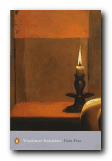 Pale Fire is a very clever artistic joke. It’s a book in two parts – the first a long poem (quite readable) written by an American poet who we are encouraged to think of as someone like Robert Frost. The second half is a series of footnoted commentaries on the text written by his neighbour, friend, and editor. But as we read on the explanation begins to take over the poem itself, we begin to doubt the reliability – and ultimately the sanity – of the editor, and we end up suspended in a nether-world, half way between life and illusion. It’s a brilliantly funny parody of the scholarly ‘method’ – written around the same time that Nabokov was himself writing an extensive commentary to his translation of Pushkin’s Eugene Onegin.
Pale Fire is a very clever artistic joke. It’s a book in two parts – the first a long poem (quite readable) written by an American poet who we are encouraged to think of as someone like Robert Frost. The second half is a series of footnoted commentaries on the text written by his neighbour, friend, and editor. But as we read on the explanation begins to take over the poem itself, we begin to doubt the reliability – and ultimately the sanity – of the editor, and we end up suspended in a nether-world, half way between life and illusion. It’s a brilliantly funny parody of the scholarly ‘method’ – written around the same time that Nabokov was himself writing an extensive commentary to his translation of Pushkin’s Eugene Onegin.
Buy the book at Amazon UK
Buy the book at Amazon US
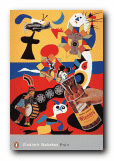 Pnin is one of his most popular short novels. It deals with the culture clash and catalogue of misunderstandings which occur when a Russian professor of literature arrives on an American university campus. Like many of Nabokov’s novels, the subject matter mirrors his life – but without ever descending into cheap autobiography. This is a witty and tender account of one form of naivete trying to come to terms with another. This particular novel has always been very popular with the general reading public – probably because it does not contain any of the dark and often gruesome humour that pervades much of Nabokov’s other work.
Pnin is one of his most popular short novels. It deals with the culture clash and catalogue of misunderstandings which occur when a Russian professor of literature arrives on an American university campus. Like many of Nabokov’s novels, the subject matter mirrors his life – but without ever descending into cheap autobiography. This is a witty and tender account of one form of naivete trying to come to terms with another. This particular novel has always been very popular with the general reading public – probably because it does not contain any of the dark and often gruesome humour that pervades much of Nabokov’s other work.
Buy the book at Amazon UK
Buy the book at Amazon US
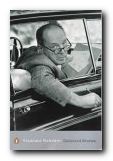 Collected Stories Nabokov is also a master of the short story form, and like many writers he tried some of his literary experiments there first, before giving them wider reign in his novels. This collection of sixty-five complete stories is drawn from his entire working life. They range from the early meditations on love, loss, and memory, through to the later technical experiments, with unreliable story-tellers and the games of literary hide-and-seek. All of them are characterised by a stunning command of language, rich imagery, and a powerful lyrical inventiveness.
Collected Stories Nabokov is also a master of the short story form, and like many writers he tried some of his literary experiments there first, before giving them wider reign in his novels. This collection of sixty-five complete stories is drawn from his entire working life. They range from the early meditations on love, loss, and memory, through to the later technical experiments, with unreliable story-tellers and the games of literary hide-and-seek. All of them are characterised by a stunning command of language, rich imagery, and a powerful lyrical inventiveness.
Buy the book at Amazon UK
Buy the book at Amazon US
More on Vladimir Nabokov
More on literary studies
Nabokov’s Complete Short Stories
